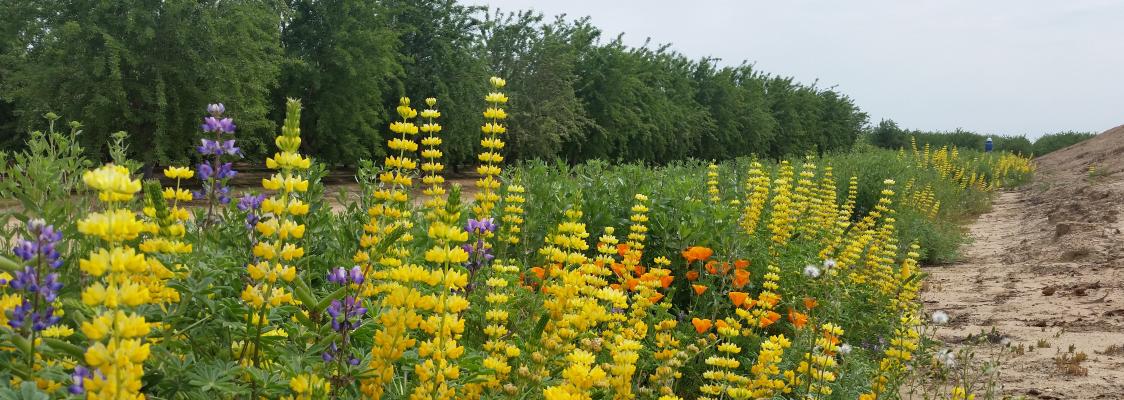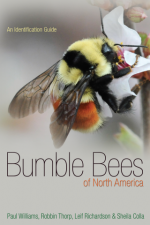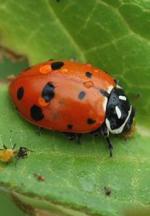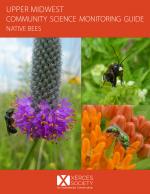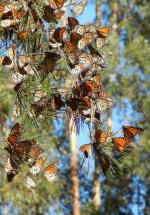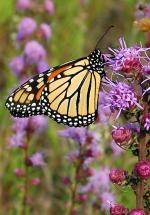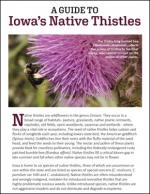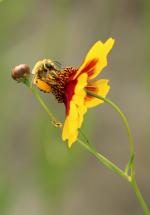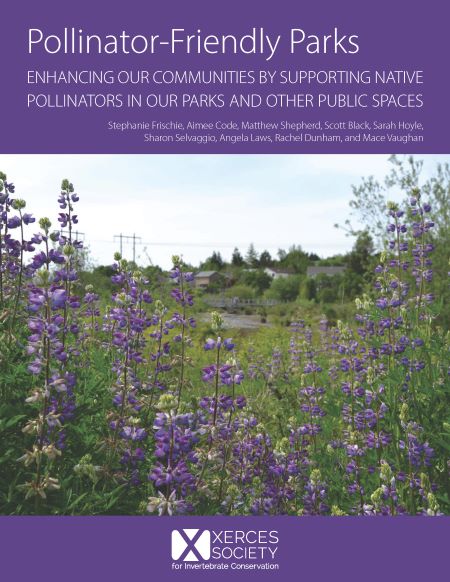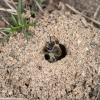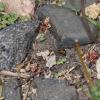Meadows and other pollinator plantings can be low-maintenance, but are rarely if ever maintenance-free. Competition from weeds, invasive species, and woody plants can degrade habitat over time if a management plan is not in place. Management tools, such as grazing, fire, and mowing, can be used in a manner that benefits pollinators. The use of insecticides and herbicides can be harmful to pollinators; if they must be used, there are a few considerations to minimize their impact on pollinators. Read through below for more information and resources.
Managing with rare species in mind
In addition to the management considerations mentioned above, natural lands where rare or endangered pollinators may be present require additional consideration of the specific life history traits of these species. For instance, some species of butterflies do not respond well to fire while other practices like mowing can destroy nest sites of rare bumble bees. If a species of concern or a remnant-dependent species is thought to exist within the management unit surveys should be completed to find out where they are on the site and then management should be tailored to ensure survival. Ultimately, the continued health of populations of all invertebrates in these natural areas will depend upon maintaining a diversity of habitats and refugia for specific species that need it.
Mowing
Mowing is a useful management practice to control the encroachment of weedy shrubs or invasive woody plants in prairies, wildflower meadows, and rangelands. However, mowing can cause direct insect mortality, especially for eggs and larvae—they can’t avoid a mower! To reduce harm to insects, we advise mowing in the fall or winter when flowers are not in bloom. Mowing a mosaic of patches over several years, which no single area mowed more than once a year, also is helpful. We also recommend the use of a flushing bar and low mower speeds to protect wildlife.
Grazing
Management plans should be customized to the specific type of livestock to balance the needs of livestock and pollinators alike. Livestock like cattle will prefer to graze on grasses, switching to wildflowers only when grasses are depleted. Other livestock like goats have more diverse feeding habits and may feed on grasses and forbs equally. Herd sizes should be moderate to small, and grazing periods should be short to allow for adequate recovery of the habitat. A diverse pollinator population requires adequate nectar and pollen sources from early spring to early fall—making seasonal timing a key consideration for an effective grazing plan. Management should be adjusted to maintain the majority of the floral resources throughout the year, and to avoid harming active butterfly larvae or adults.
Fire
While prescribed burning has a role to play in the long-term maintenance of natural areas and pollinator habitat, it can also have catastrophic impacts on pollinators and other invertebrates. To minimize negative impacts, a program of rotational burning, in which small sections—30 percent of a site or less—are burned every few years will ensure adequate colonization potential and refugia for insects.
Pesticides
While herbicides can be an important management tool, they also can reduce important floral resources. To avoid herbicide damage to non-target plants and the pollinators that rely on them, avoid broadcast spraying or pellet dispersal. Each ot these may kill large numbers of larval host plants or adult forage plants. Instead, we recommend that you spot-treat specific plants or patches of weeds.
Insecticides used on forests, rangelands, and farms can also severely impact pollinator populations. In situations where insecticides must be used, it is best to avoid spraying when flowers are in bloom. It is also important to look for butterfly host plants in the management area, and avoid spraying them. In general, dusts and microencapsulated insecticides are the most dangerous formulations for bees, and aerial spraying is the most harmful method of application. Sprayed solutions and large granules tend to be less harmful to pollinators.

